| Size | 55-56 cm |
|---|---|
| Materials Used | Leather Chin Strap, Woolen Felt |
Gurkha Logistic Regiment Hat (Light Brown 03)
US$ 116.00
This Gurkha Logistic Regiment Hat (Light Brown 03) was worn by Gurkha Logistic Regiment soldiers. The 10 Queen’s Own Gurkha Logistic Regiment is in Aldershot, England. Over a century ago, the 2nd Gurkha Rifles introduced the slouch hat, now iconic for Gurkha soldiers. It served in India’s frontiers and both World Wars.
This particular felt Gurkha Hat was previously worn by the soldiers from Gurkha Logistic Regiment. The 10 Queen’s Own Gurkha Logistic Regiment is based in Aldershot, England.
It has now been more than a century since this hat was first introduced into Gurkha Regiments for field service wear. In 1901 the 2nd Gurkha Rifles became the first Gurkha regiment to adopt the slouch hat. To the present day, felt Gurkha Hats have become synonymous with the Gurkha soldiers. The hat went on to be worn by Gurkha units on the frontiers of India and in all the operational theatres during both World Wars.
Today, it is worn by Gurkha units of the British and Indian Armies, the Nepalese Army, and by many Gurkha police & security units around the world. The origins of felt Gurkha Hats date from the beginning of the 20th Century when a substitute form of headdress was being actively sought to replace the Kilmarnock Hat for wear on field service. In The British Army, it is no longer worn in the field and it is now primarily confined to parades and ceremonial duties. The Kilmarnock hat was adopted during the second half of the 19th Century and became the universal headdress of Gurkha Regiments. But it had very little to commend when worn in the field. It neither gave protection from the burning sun nor the heavy monsoon rain.
Over the years, several modifications had been made to it both by the authorities and individual battalions. In 1864, the Adjutant-General’s Department in India had sanctioned khaki covers for wearing on-field service. Later a flap was hooked onto the cover at the back of the Kilmarnock to protect the neck from the sun. When the 4th Gurkhas went to China in 1900 following the Boxer Rebellion, a wired brim that was narrow at the front and wide at the back, was fitted over the Kilmarnock as protection from the sun.
During the 2nd Afghan War of 1878-80, 3rd Gurkhas had for a time-worn a puggaree. This drew attention from 2nd Gurkhas because, in Nepal, the puggaree was viewed as being the outward sign of a man from the plains. Nevertheless, following the Tirah campaign on the Northwest Frontier in 1897, 2nd Gurkhas also considered replacing the Kilmarnock with the puggaree for wear along with British officers. Different regimentals’ badges are mounted on the hat to distinguish soldier and officer from each other’s regiment.
Regimental Hat badge as requested by our beloved customers.
Origin: Kathmandu, Nepal
Only logged in customers who have purchased this product may leave a review.

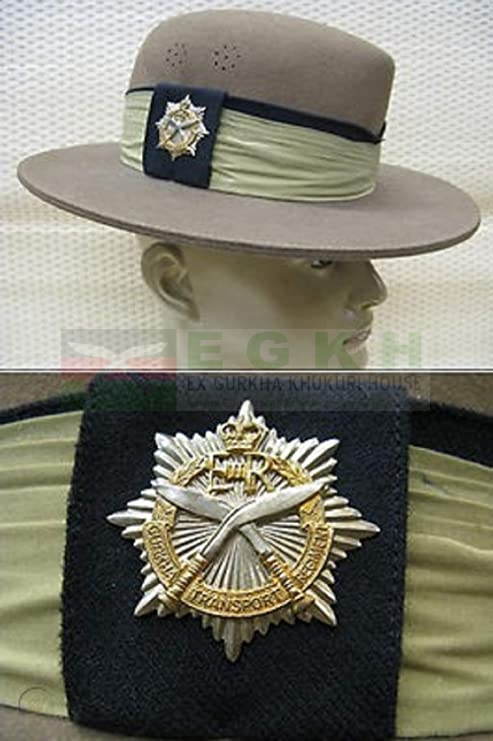
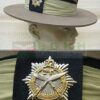
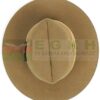
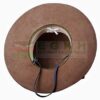
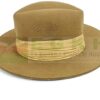
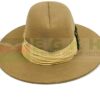
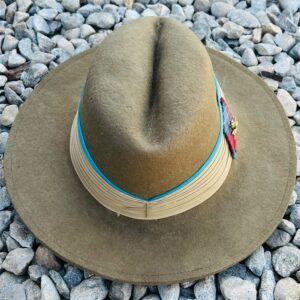
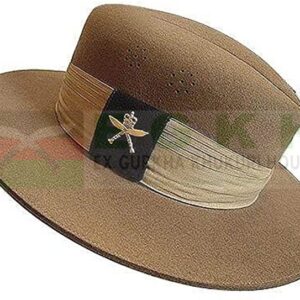
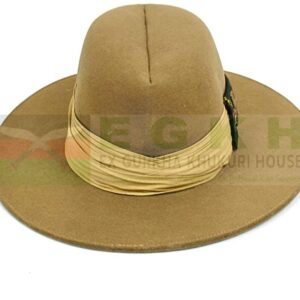
Reviews
There are no reviews yet.